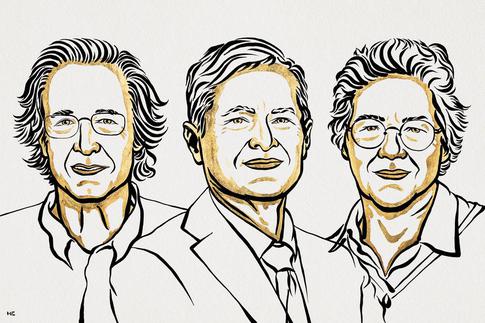XFEL: European XFEL congratulates Physics Nobel Prize laureates
European XFEL congratulates Physics Nobel Prize laureates
Researchers at the world’s largest X-ray laser congratulate Pierre Agostini, Ferenc Krausz and Anne L’Huillier, who receive the 2023 Nobel Prize in Physics for the development of experimental methods that generate attosecond pulses of light for the study of electron dynamics in matter.

Pierre Agostini, Ferenc Krausz, Anne L'Huillier - Ill. Niklas Elmehed © Nobel Prize Outreach
European XFEL managing director Prof. Robert Feidenhans’l said: “The work of Anne and her colleagues is truly outstanding and gives European XFEL the directions for science in the attosecond regime with higher photon energies. We congratulate the laureates and are especially pleased that this important work has been honoured with the Nobel Prize – the highest possible accolade in science."
Chemical reactions are often initiated by the ultrafast movement of electrons taking place on the attosecond time scale, leading to the break-up of molecular bonds. At the European XFEL´s SQS instrument, researchers already started time-resolved studies with attosecond pulses stimulated by the work of the laureates, aiming to understand and finally to control these processes in the electronic shell. These experiments line up very well to the general program of attosecond science at European XFEL.
